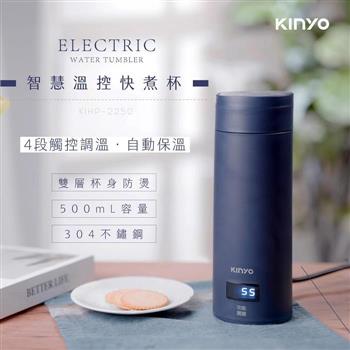A Network Centric Receiver Architecture for Low Frequency Arrays
-
9折 1008元
1120元
-
 預計最高可得金幣50點
?
可100%折抵
預計最高可得金幣50點
?
可100%折抵
活動加倍另計 -
HAPPY GO享100累1點 4點抵1元折抵無上限
- 作者: Peeyush,Prasad 追蹤 ? 追蹤作者後,您會在第一時間收到作者新書通知。
- 出版社: Ingram 追蹤 ? 追蹤出版社後,您會在第一時間收到出版社新書通知。
- 出版日:2023/01/19
配送方式
-
台灣
- 國內宅配:本島、離島
-
到店取貨:
不限金額免運費




-
海外
- 國際快遞:全球
-
港澳店取:



內容簡介
A network-centric receiver architecture for low-frequency arrays refers to a system design where the receiver and signal processing components are distributed across multiple nodes in a network, rather than being centralized in a single location. This approach allows for greater flexibility and scalability in the design and deployment of low-frequency array systems, such as radio telescopes or communication systems. The network-centric architecture can also enable advanced signal processing capabilities, such as real-time beamforming and direction-finding, as well as the ability to handle large amounts of data from multiple antennas. This architecture can be implemented using various technologies, such as software-defined radio, field-programmable gate arrays, and network protocols.
A network-centric receiver architecture for low-frequency arrays is a system design that utilizes a network of interconnected nodes to perform the functions of a traditional centralized receiver. Instead of having all the receiver and signal processing components in a single location, they are distributed across multiple nodes in the network. This approach provides several benefits over traditional centralized receiver architectures.
One of the main advantages of a network-centric architecture is its flexibility and scalability. With this architecture, it is possible to easily add or remove nodes as needed, without having to completely redesign the entire system. This allows for more efficient use of resources and easier maintenance and upgrades. Additionally, it is also possible to use different types of hardware and software at each node, allowing for greater customization and optimization of the system.
The network-centric architecture also enables advanced signal processing capabilities. For example, real-time beamforming and direction-finding can be performed by distributing the processing across multiple nodes, which allows for faster and more accurate results. Additionally, the architecture can handle large amounts of data from multiple antennas, making it useful for applications such as radio telescopes and communication systems.
The network-centric architecture can be implemented using various technologies, such as software-defined radio (SDR), field-programmable gate arrays (FPGAs), and network protocols. SDR allows for the flexibility to change the radio's behavior on the fly and FPGAs offer high-speed signal processing capabilities. Network protocols such as TCP/IP or Ethernet can be used to connect the nodes together, allowing for easy communication and data transfer. A network-centric receiver architecture for low-frequency arrays provides significant benefits over traditional centralized architectures, including greater flexibility, scalability, and advanced signal processing capabilities.
Although radio astronomy began with observations at low frequencies (;S 408 MHz),
the need for high angular resolutions and dynamic ranges for carrying out studies of
discrete radio sources and the progress in receiver technology resulted in a shift
towards observations at higher frequencies ( GHz). Thus, the high frequency domain was explored
to a much greater extent, as compared to low frequencies.
However, there has been recent revival of interest in the low frequency radio regime for addressing
several problems of astrophysical significance [l], ranging from study of coherent emission
processes, e.g., jovian bursts, solar and stellar radio bursts, pulsar emission to
investigation of galaxy mergers, activity in giant radio galaxies.
訂購/退換貨須知
加入金石堂 LINE 官方帳號『完成綁定』,隨時掌握出貨動態:
商品運送說明:
- 本公司所提供的產品配送區域範圍目前僅限台灣本島。注意!收件地址請勿為郵政信箱。
- 商品將由廠商透過貨運或是郵局寄送。消費者訂購之商品若無法送達,經電話或 E-mail無法聯繫逾三天者,本公司將取消該筆訂單,並且全額退款。
- 當廠商出貨後,您會收到E-mail出貨通知,您也可透過【訂單查詢】確認出貨情況。
- 產品顏色可能會因網頁呈現與拍攝關係產生色差,圖片僅供參考,商品依實際供貨樣式為準。
- 如果是大型商品(如:傢俱、床墊、家電、運動器材等)及需安裝商品,請依商品頁面說明為主。訂單完成收款確認後,出貨廠商將會和您聯繫確認相關配送等細節。
- 偏遠地區、樓層費及其它加價費用,皆由廠商於約定配送時一併告知,廠商將保留出貨與否的權利。
提醒您!!
金石堂及銀行均不會請您操作ATM! 如接獲電話要求您前往ATM提款機,請不要聽從指示,以免受騙上當!
退換貨須知:
**提醒您,鑑賞期不等於試用期,退回商品須為全新狀態**
-
依據「消費者保護法」第19條及行政院消費者保護處公告之「通訊交易解除權合理例外情事適用準則」,以下商品購買後,除商品本身有瑕疵外,將不提供7天的猶豫期:
- 易於腐敗、保存期限較短或解約時即將逾期。(如:生鮮食品)
- 依消費者要求所為之客製化給付。(客製化商品)
- 報紙、期刊或雜誌。(含MOOK、外文雜誌)
- 經消費者拆封之影音商品或電腦軟體。
- 非以有形媒介提供之數位內容或一經提供即為完成之線上服務,經消費者事先同意始提供。(如:電子書、電子雜誌、下載版軟體、虛擬商品…等)
- 已拆封之個人衛生用品。(如:內衣褲、刮鬍刀、除毛刀…等)
- 若非上列種類商品,均享有到貨7天的猶豫期(含例假日)。
- 辦理退換貨時,商品(組合商品恕無法接受單獨退貨)必須是您收到商品時的原始狀態(包含商品本體、配件、贈品、保證書、所有附隨資料文件及原廠內外包裝…等),請勿直接使用原廠包裝寄送,或於原廠包裝上黏貼紙張或書寫文字。
- 退回商品若無法回復原狀,將請您負擔回復原狀所需費用,嚴重時將影響您的退貨權益。








商品評價